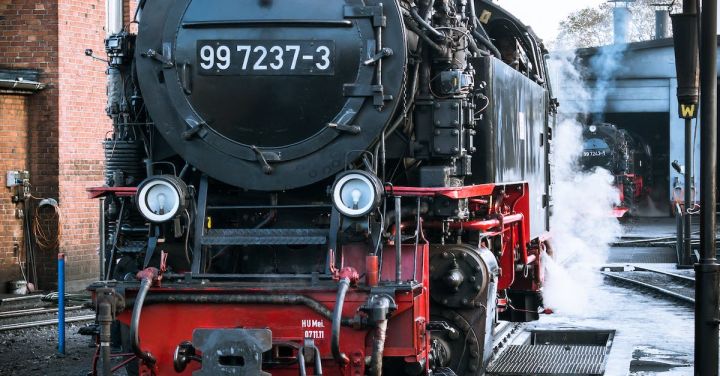In a world dominated by modern technology and high-speed transportation, the traditional steam locomotives of yesteryears seem like a distant memory. These magnificent machines were once the backbone of transportation, powering trains across vast distances and connecting people and places like never before. However, with the advent of diesel and electric locomotives, the era of the steam locomotive gradually came to an end.
The steam locomotive, with its billowing smoke and rhythmic chugging sound, captured the imagination of generations. It was a symbol of progress and a testament to human ingenuity. The design of these locomotives was a feat of engineering, with their massive boilers, pistons, and wheels. The steam produced by burning coal in the firebox created the power needed to propel the train forward.
The steam locomotive era began in the early 19th century and reached its peak in the late 1800s and early 1900s. During this time, railways expanded rapidly, connecting cities and towns and revolutionizing transportation. Steam locomotives played a crucial role in the Industrial Revolution, enabling the efficient movement of goods and people across vast distances.
One of the most iconic steam locomotives was the British-built ‘Flying Scotsman.’ It was known for its speed and elegance, setting multiple world records during its time in service. The ‘Big Boy,’ built in the United States, was another legendary locomotive, famous for its immense size and power. These locomotives were a source of pride and admiration, both for the countries that built them and the engineers who operated them.
Despite their significance and popularity, steam locomotives were not without their challenges. They required constant maintenance and a steady supply of coal and water. The locomotive engineer had the arduous task of stoking the fire, regulating the steam pressure, and controlling the speed. It was a labor-intensive process that demanded skill and dedication.
The decline of steam locomotives began in the mid-20th century, as diesel and electric locomotives offered more efficiency and reliability. These newer technologies eliminated the need for coal and the constant stoppages to replenish water. They were also faster and required fewer maintenance resources. Gradually, steam locomotives were retired from service, becoming relics of a bygone era.
Today, steam locomotives are mostly preserved in museums and heritage railways, where they serve as a reminder of a time when trains were powered by steam and human hands. These museums and railways allow visitors to experience the nostalgia and grandeur of steam locomotives firsthand. They offer rides on restored locomotives, allowing people to step back in time and imagine what it was like to travel by train in the past.
While the steam locomotive era may have ended, its legacy lives on. These majestic machines played a vital role in shaping the world we live in today. They connected people, facilitated trade, and united nations. The steam locomotive symbolizes a time when progress was measured by the power of steam and the ability to traverse vast distances.
In a world driven by speed and efficiency, it is easy to forget the charm and romance of the traditional steam locomotive. But the legacy of these machines continues to captivate and inspire. The era of the steam locomotive may be gone, but its impact on history and transportation will forever be remembered.
